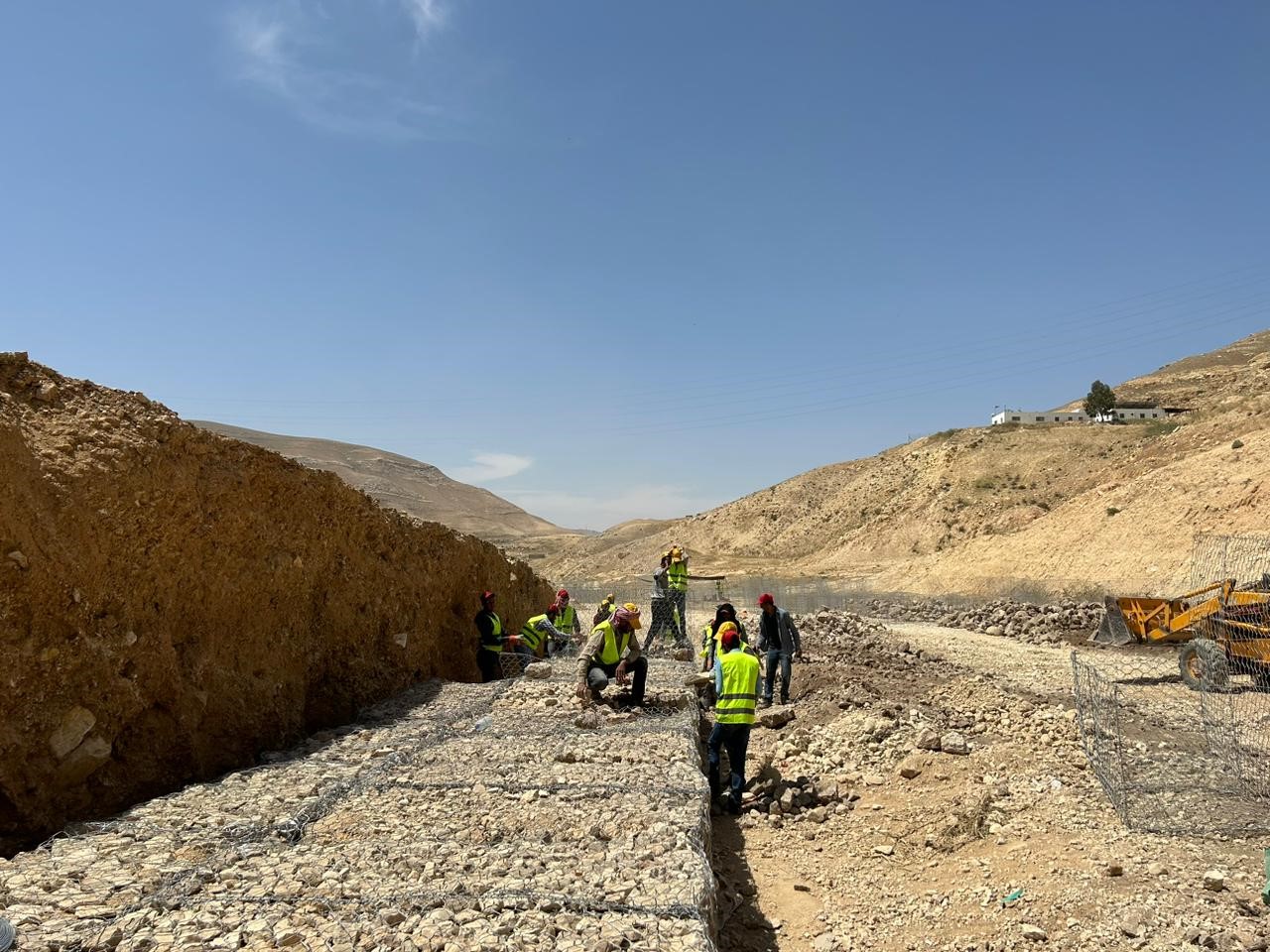The main objectives are:
Objective (1): Improve host communities and Syrian refugees’ livelihood, skills and capacities by creating Three Hundred and ninety-five (395) short term employment t opportunities. (50% Jordanian, 50% Syrian refugees, at least 20 % women)
Objective (2): Reduce the impact of sedimentation and soil erosion by regulating and controlling floods to the dam through planting 4500 seedlings and constructing 2400 M3 gabion baskets and 200 m2 Riprap.
Objective (3): Reduce evaporation in Zarqa Ma'in Dam Lake by adopting new innovative techniques through shading 11% of the average dam lake surface, which covers 5300 m2.
The Zarqa Ma'in Basin stands out as the most extensive among Jordanian water basins when considering the length of its tributaries, spanning a total distance of 420 kilometres. It plays a vital role in serving various sectors, including agriculture and tourism. Given its substantial size and geographical characteristics, this basin poses a flooding hazard to the interconnected valleys, with special attention to the vulnerable Zarqa Ma'in valley, which holds significant importance. As a result, the Jordanian government has established the Zarqa Ma'in Dam to protect the environment and people from flash floods, provide additional water for crop irrigation and tourist ventures, and to expand agricultural lands in the surrounding area, which stretches from Wadi Zarqa-Ma’in towards the Jordan Valley.
A significant concern confronting Jordan's dams, including the Zarqa Ma'in Dam, is the accumulation of sediment resulting from winter flash floods. This sedimentation substantially reduces their storage capacity.
Moreover, the substantial evaporation rate poses a significant threat for water security at the basin, resulting in the loss of a considerable portion of water stored in the dams. The Ministry of Water and Irrigation has released multiple reports indicating that the amount of water flowing into the dam is less than what is flowing out. Given these circumstances, along with the unpredictable and varying rainfall levels, there is a pressing need for effective solutions to enhance dam storage efficiency and optimize the benefits derived from them.
In addition, the economic situation of the local communities living along Wadi Zarqa Ma'in is one of the challenges for the Jordanian government in particular the high unemployment rate, high poverty and the considerable population of Syrian refugees. Therefore, providing these communities with decent employment opportunities and building their capacities will contribute positively to living condition. Through this project, IUCN seeks to ensure providing short-term employment to enhance livelihood status of local communities and Syrian refugees. The vulnerable from local community and Syrian refugees will work together to implement measures for reducing the sediment loads and soil erosion, as well as minimize the water evaporation by introducing surface shading techniques and adapting nature based-solution interventions. The project will further consider activities to support local farmers such as rehabilitation of the existing irrigation canal.



